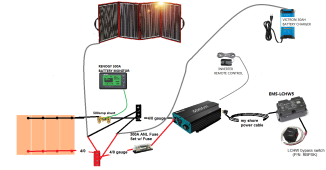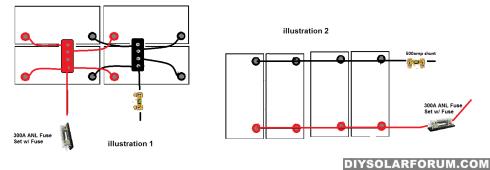justinm001
Solar Addict
- Joined
- Dec 18, 2022
- Messages
- 1,542
First off renogy is junk and their support is horrible so don't listen to them.
Yes the shunt is right but everything to the left of the lithium is wrong.
Like supervstech said if you're trying to hookup the lead acid it needs to have a neg from house to before the shunt and use 4/0 wire everywhere or how you drew the last photo which is more complicated.
A DC to DC charger going from lead acid to lithium would allow you to use the alternator to charge the lithium and house. It'll limit how much charging they can take so you don't overheat the alternator.
A DC to DC charger going from lithium to lead acid will allow you to use lithium for your 12v house loads and charge the lead acid from the lithium.
You can have either or both. If setting up like your photo with some manual switch you'll need to move the house + to the buss bar and the Neg to the shunt or buss bar depending on how you want to use the shunt. Ideally 2 shunts 1 for each. The biggest issue is if you flip that switch then the renogy and solar charging profiles need to be changed each time from lead acid to lithium.
Yes the shunt is right but everything to the left of the lithium is wrong.
Like supervstech said if you're trying to hookup the lead acid it needs to have a neg from house to before the shunt and use 4/0 wire everywhere or how you drew the last photo which is more complicated.
A DC to DC charger going from lead acid to lithium would allow you to use the alternator to charge the lithium and house. It'll limit how much charging they can take so you don't overheat the alternator.
A DC to DC charger going from lithium to lead acid will allow you to use lithium for your 12v house loads and charge the lead acid from the lithium.
You can have either or both. If setting up like your photo with some manual switch you'll need to move the house + to the buss bar and the Neg to the shunt or buss bar depending on how you want to use the shunt. Ideally 2 shunts 1 for each. The biggest issue is if you flip that switch then the renogy and solar charging profiles need to be changed each time from lead acid to lithium.






